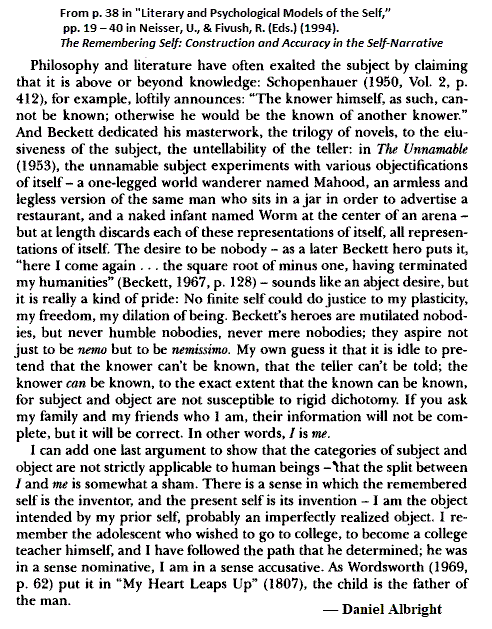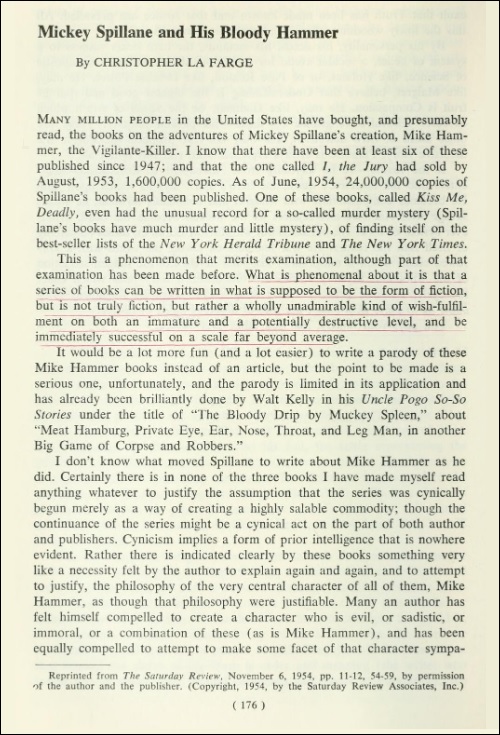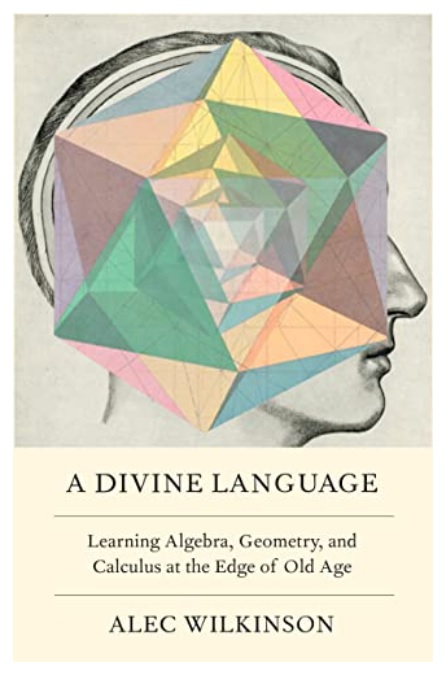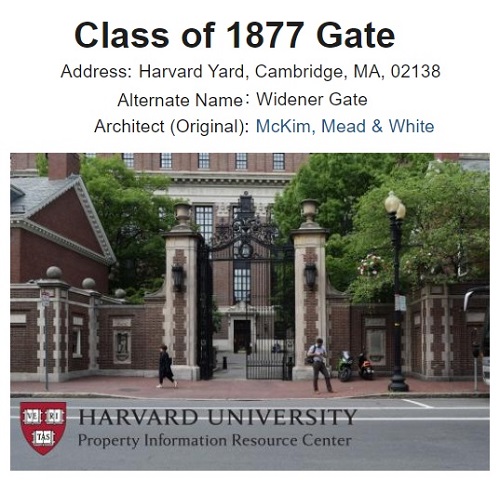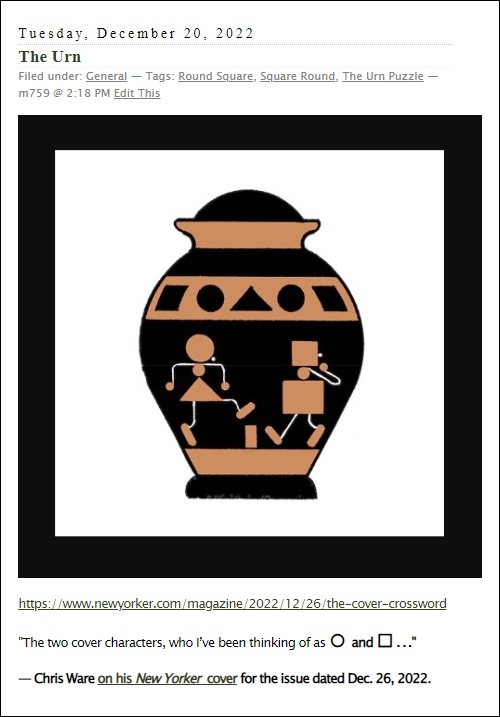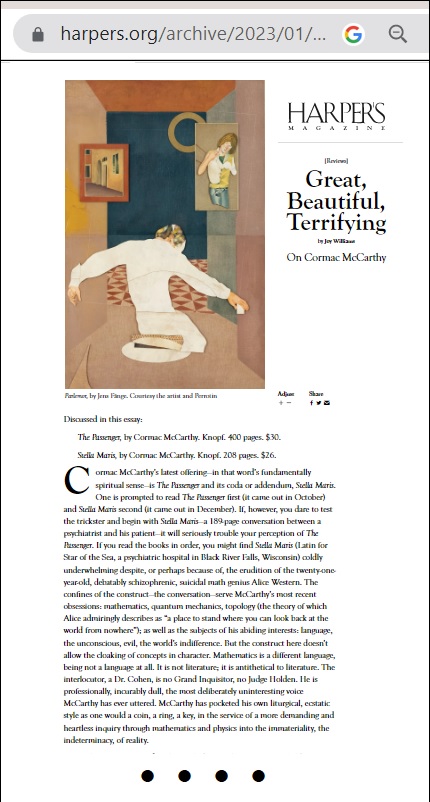Wednesday, February 8, 2023
The epigraph to Chapter 2 of Category Theory in Context by Emily Riehl —

[Maz16] Barry Mazur. Thinking about Grothendieck.
Notices of the AMS, 63(4):404–405, 2016.
The above epigraph in context, in a paper dated
January 6, 2016 (Epiphany) —

Also on Epiphany 2016 —
Wednesday, January 6, 2016
Filed under: General,Geometry — m759 @ 8:35 AM
The title is a new URL.
Midrash on the URL suffix —
" 'I/O' is a computer term of very long standing
that means 'input/output,' i.e. the means by which
a computer communicates with the outside world.
In a domain name, it's a shibboleth that implies
that the intended audience for a site is other
programmers."
— Phil Darnowsky on Dec. 18, 2014
Remarks for a wider audience —
See some Log24 posts related to Dec. 18, 2014.
|
Comments Off on Text and Context: The Epiphany Shibboleth
Tuesday, February 7, 2023


The above cubic equation may also be written as
x3 – x – 1 = 0.
The equation occurred in my own work in 1985:

An architects' equation that appears also in Galois geometry.
For further details on the plastic number, see an article by
Siobhan Roberts on John Baez in The New York Times —
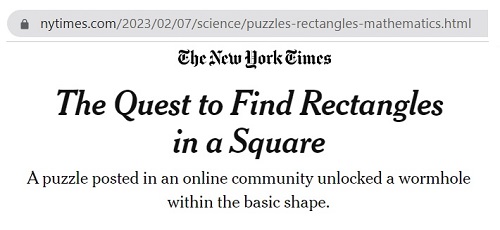
Comments Off on The Graduate School of Design


Perhaps Crossan should have consulted Galois, not Piaget . . .

From Hermann Weyl's 1952 classic Symmetry —
"Galois' ideas, which for several decades remained
a book with seven seals but later exerted a more
and more profound influence upon the whole
development of mathematics, are contained in
a farewell letter written to a friend on the eve of
his death, which he met in a silly duel at the age of
twenty-one. This letter, if judged by the novelty and
profundity of ideas it contains, is perhaps the most
substantial piece of writing in the whole literature
of mankind."
Comments Off on Interstices
Monday, February 6, 2023
Epigraph to The Dark Interval , by John Dominic Crossan —
“I am the pause between two notes that fall
into a real accordance scarce at all:
for Death’s note tends to dominate—
Both, though, are reconciled in the dark interval,
tremblingly.
And the song remains immaculate.”
—Rilke, The Book of Hours , I


"What we do may be small, but it has
a certain character of permanence."
— G. H. Hardy in A Mathematician's Apology
Comments Off on For February 6
For Bill Irwin —
<meta property="article:published_time"
content="2023-02-06T11:00:00.000Z"/>
The Source —
view-source:https://www.newyorker.com/magazine/2023/02/13/
finding-laughs-amid-the-gray-in-becketts-endgame
See as well the previous post and . . .

Comments Off on Clown
|
You, Xi-lin; Zhang, Peter. "Interality in Heidegger."
The Free Library , April 1, 2015.
. . . .
The term "interology" is meant as an interventional alternative to traditional Western ontology. The idea is to help shift people's attention and preoccupation from subjects, objects, and entities to the interzones, intervals, voids, constitutive grounds, relational fields, interpellative assemblages, rhizomes, and nothingness that lie between, outside, or beyond the so-called subjects, objects, and entities; from being to nothing, interbeing, and becoming; from self-identicalness to relationality, chance encounters, and new possibilities of life; from "to be" to "and … and … and …" (to borrow Deleuze's language); from the actual to the virtual; and so on. As such, the term wills nothing short of a paradigm shift. Unlike other "logoi," which have their "objects of study," interology studies interality, which is a non-object, a no-thing that in-forms and constitutes the objects and things studied by other logoi.
. . . .
|
Some remarks from this journal on April 1, 2015 —
The above site, finitegeometry.org/sc, illustrates how the symmetry
of various visual patterns is explained by what Zhang calls "interality."
Comments Off on Interality Studies
Sunday, February 5, 2023
Cullinane, 1977 —
Patterns in the space
between subsquares —
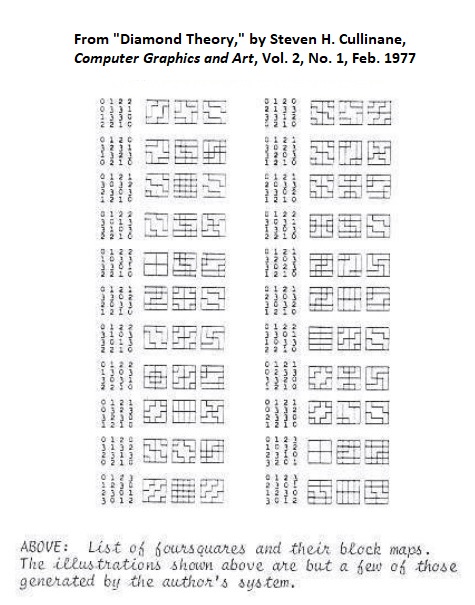
Designer unknown, 2023 —
Figures in the space
between fingers —

Comments Off on Negative Space: Examples

A different NAM that some will prefer —

Experiential Events in this journal
on the above DC program date —


Comments Off on NAM-NAM for Riri


A Logo for Riri —

The above Nick Romano passage is from Knock on Any Door,
a 1947 novel by Willard Motley. Another Motley novel about
Chicago, from 1958 . . .
Let No Man Write My Epitaph —
|
Page 41
The city was a blue-black panther that slunk along beside them. The tall, skyscraper night-grass hemmed them in. The thousand neon animal eyes watched their going.
Page 67
The blue-black panther of a city watched their going. The un- blinking neon animal eyes watched their going. Thousands of neon signs lit their way. In an alley behind West Madison Street half an
Page 68
hour before, a bum, drunk, had frozen to death lying in the back doorway of a pawnshop. The blue-black panther crouched over him.
Page 70
First the creak of ice as an automobile goes by. Then the frown into your room of the red brick building across the street, its windows frosted over like cold, unfriendly eyes. Then a bum stumbling along trying to keep warm. Now a drunk, unevenly. And the wind like the howling voice of the blue-black panther, hunting, finding. And the clanging of impersonal streetcars. And each bar of neon, cold, dead. No message. The clown takes his bow and it is Christmas Day.
Page 79
The blue-black panther followed them, sniffing at their heels.
Page 106
Above them the blue-black panther lay on the roof of a tenement house, its feline chin on the cornice, its yellow-green eyes staring down onto the black night street of Maxwell. Its tail, wagging slowly back and forth, was like a lasso, a noose, sending little shivers of pebbles rolling loosely across the roof.
Page 154
Then he went down to the Shillelagh Club. Through the pane, in the crowded, noisy place, he saw her. She was sitting at a table near the back, alone. Her cigarette had fallen from her lips and rolled away from her on the table top. It had burned itself to a long gray ash. Her head hung loosely on her neck as if she was asleep. A half-empty glass of beer was in front of her. Please, Mother, please come out, he prayed to her. And he stood next door to the tavern, waiting, his small shoulders drawn in, his head down in shame. And often he walked to the window and stood on tiptoe. She was still there. In the same position. He waited. He would be late to school tomorrow. He waited, keeping the long vigil. He waited. Twelve years old. And the thousand neon-animal eyes stared at him savagely. He waited. The blue-black panther lashed out its tail, flicking its furry tip against his ankles. He waited.
Page 250
Alongside the blue-black patrol wagon the blue-black panther walks majestically.
Page 262
Outside the door the blue-black panther rubs its back like a house cat.
Page 409
Nick held the cigarette listlessly. The smoke curled up his wrist and arm like a snake. The blue-black panther licked his hand.
|
Comments Off on Dimensions
Saturday, February 4, 2023



For remarks more closely related to United States history,
see a Masonic view of the Phoenix.
Comments Off on More Literary Transformations
Comments Off on Signage for Transformers
On a concert at Carnegie Hall
on Saturday, Jan. 28, 2023 —
"The ravished NYT reviewer offers
some nice writing …."
Related Log24 posts —
"Just 17," Dec. 17, 2020, and
"Just 17," June 17, 2022.
Comments Off on The Reviewer Reviewed
Friday, February 3, 2023
Comments Off on Putting the “n” back in Mensa
Comments Off on Shadow Work
Comments Off on Expansive Sensibilities
From Wednesday, St. Bridget's Day, 2023 —

Poetic meditation from The New Yorker today —
"If the tendency of rhyme, like that of desire,
is to pull distant things together
and force their boundaries to blur,
then the countervailing force in this book,
the one that makes it go, is the impulse
toward narrative, toward making sense of
the passage of time."
Comments Off on Rhyme Time
"Intended for a white European male audience, the sensual
reclining nude belongs to a long artistic tradition."
— The Courtauld Gallery on Gaugin's "Nevermore" (1897)
"After decades abroad, Mr Doig has returned again to London.
On February 10th he opens a new exhibition at the Courtauld Gallery ….
The Courtauld is also the home of Britain’s finest Impressionist collection,
and some of the paintings in the new show recall and respond to those works.
A depiction of an alpinist by Mr Doig speaks to Paul Cézanne’s view of
Lake Annecy, a tropical bather . . . gestures at Paul Gauguin’s nude
'Nevermore'."
— https://www.economist.com/culture/2023/02/02/
look-closely-at-peter-doigs-paintings-then-look-again
The London School of Economics has a more direct approach to art —

Comments Off on Nevermore Academy Meets the London School
Thursday, February 2, 2023
"When the Washington Post unveiled the slogan
'Democracy Dies in Darkness,' on February 17, 2017,
people in the news business made fun of it.
'Sounds like the next Batman movie,' the New York Times’
executive editor, Dean Baquet, said."
— Louis Menand in The New Yorker ,
"When Americans Lost Faith in the News," Jan. 30, 2023.
See also Darkness in this journal.
Not so dark:
A Log24 post from February 17, 2017
regarding that year's Groundhog Day — The dies natalis
(in the Catholic sense) of St. Bertram Kostant.
Comments Off on The Menand Lede

See also Doktor Faustus (Mann) and Symmetry (Weyl).
From Albright's book, see passages on Nabokov.
Comments Off on “Solid Objects Precipitating”
From tonight's previous post —
"here I come again . . . the square root of minus one,
having terminated my humanities" —
Samuel Beckett, Stories and Texts for Nothing
(New York: Grove, 1967), 128.
|
From The French Mathematician
by Tom Petsinis (Nov. 30, 1998) —
0
I had foreseen it all in precise detail.
One step led inevitably to the next,
like the proof of a shining theorem,
down to the conclusive shot that still echoes
through time and space.
Facedown in the damp pine needles,
I embraced that fatal sphere
with my whole body. Dreams, memories,
even the mathematics I had cherished
and set down in my last will and testament–
all receded. I am reduced to
a singular point; in an instant
I am transformed to i .
i = an imaginary being
Here, on this complex space,
i am no longer the impetuous youth
who wanted to change the world
first with a formula and then with a flame.
Having learned the meaning of infinite patience,
i now rise to the text whenever anyone reads
about Evariste Galois, preferring to remain
just below the surface,
like a goldfish nibbling the fringe of a floating leaf.
Ink is more mythical than blood
(unless some ancient poet slit his
vein and wrote an epic in red):
The text is a two-way mirror
that allows me to look into
the life and times of the reader.
Who knows, someday i may rise
to a text that will compel me
to push through to the other side.
Do you want proof that i exist? Where am i ?
Beneath every word, behind each letter,
on the side of a period that will never see the light.
|
Related reading . . .

See also "William Lawvere, Category Theory, Hegel, Mao, and Code."
( https://www.reddit.com/r/socialistprogrammers/comments/m1oe88/
william_lawvere_category_theory_hegel_mao_and_code/ )
Also relating category theory and computation —
the interests of Lawvere and those of Davis — is
an article at something called The Topos Institute (topos.site) —
"Computation and Category Theory," by Joshua Meyers,
Wednesday, 10 Aug., 2022.
Meyers on Davis —

Comments Off on “Here I Come Again”
Wednesday, February 1, 2023
Comments Off on The Sham Man
Comments Off on For Sidney Powell: The Crimson Kraken
Last updated at 22:46 PM ET on 1 February 2023.

Click for a designer's obituary.
Paraphrase for a road-sign collector:

See as well … Today's New York Times obituary
of the Harvard Business School Publishing
Director of Intellectual Property.
Comments Off on Variations in Memory of a Designer
Tuesday, January 31, 2023
"The literary attack on the concept of a remembered self
comes principally from three directions:
(1) the brokenness of memory,
(2) the difficulty of affirming that all memories pertain to
the same self; and
(3) the impossibility of pretending that a subject is an object.
All three of these attacks tend to dissolve the self, to expose it
as fictitious, artificial, quaintly contrived."
— The late Daniel Albright,
"Literary and Psychological Models of the Self,” pp. 19 – 40 in
Neisser, U., & Fivush, R. (Eds.) (1994). The Remembering Self:
Construction and Accuracy in the Self-Narrative (Emory Symposia
in Cognition). Cambridge: Cambridge University Press.
See also The Thing and I.
Comments Off on The Object Subject
Comments Off on “Modern Space Design”
Sunday, January 29, 2023
The RID Dance
|
RID = Recognition, Intrusion, Distraction
"These 3 factors are why drownings occur
when a lifeguard is on duty. It is a lifeguard’s
primary responsibility to prevent injuries first
and respond to injuries second.
1. The lifeguard fails to recognize a drowning.
2. There is an intrusion on the lifeguard’s
primary responsibility of surveillance,
i.e. chemical checks or cleaning the deck.
3. The lifeguard is distracted from their
primary surveillance responsibility."
|
Related reading —

Click for an enlargeable PDF.
Comments Off on Annals of Deconstruction


Instead of Verlaine and Rimbaud, some will prefer Fairlane and Rambo —

Comments Off on Darkness Doubled, Doubled.
Saturday, January 28, 2023
In memory of songwriter Tom Verlaine, images
from a Log24 search for "Darkness Doubled" —

Related material:
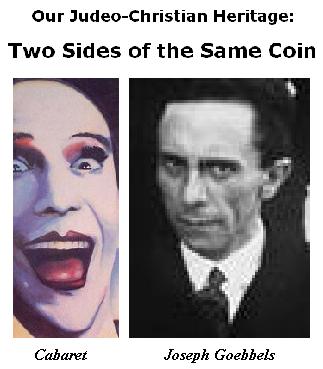
Comments Off on Darkness Doubled
Friday, January 27, 2023
Here stands the mean, uncomely stone,
’Tis very cheap in price!
The more it is despised by fools,
The more loved by the wise.
— https://jungcurrents.com/
the-story-of-the-stone-at-bollingen
Not so cheap:

Identical copies of the above image are being offered for sale
on three websites as representing a Masonic "cubic stone."
None of the three sites say where, exactly, the image originated.
Image searches for "Masonic stone," "Masonic cube," etc.,
fail to yield any other pictures that look like the above image —
that of a 2x2x2 array of eight identical subcubes.
For purely mathematical — not Masonic — properties of such
an array, see "eightfold cube" in this journal.
The websites offering to sell the questionable image —
Comments Off on The Stone
The November 6, 1954, Saturday Review date
in the previous post suggests a flashback, from
those available online, to a couple of days earlier
in November 1954 —
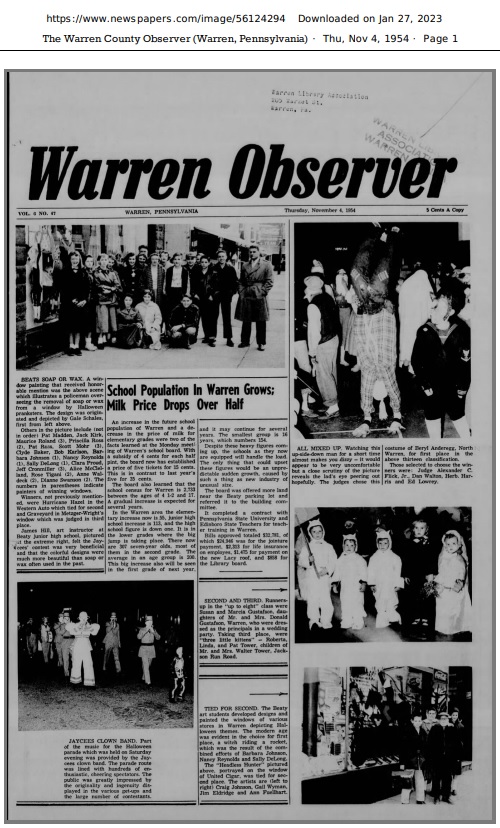
Click for an enlargeable PDF version.
For two of the characters in these pictures, see Crux.
Comments Off on Street Theater
Comments Off on More from the Illustrious La Farge Family
Wednesday, January 25, 2023
"He played with history and narrative techniques." — Obituary headline

* See his New York Times obituary, online today —

Comments Off on In Memory of an Author* Who Died on Wednesday, Jan. 18
Comments Off on More Sucker Bait at the Palace
"… the focus of interest for most of the American military attachés
in Europe became tanks and antitank/antiaircraft weapons."
— https://www.benning.army.mil/armor/earmor/
content/issues/2020/Fall/4Candill20.pdf
See also "A Meadow for Trevanian" (Sept. 27, 2021).
Comments Off on Toys ‘R’ Us —The Focus of Interest

A check of the phrase "memory-alpha" in the above URL
reveals that it comes from a 1969 Star Trek episode
written by Shari Lewis and her husband Jeremy Tarcher.
Tarcher reportedly died on Sunday, Sept. 20, 2015.
From this journal on that date —
On the editor of the anthology Space, Space, Space :
"Sloane’s writing is drum-tight, but his approach
is looser; he pulls the reader in and then begins
turning up the heat. He understood that before
a pot can boil, it must simmer." — Stephen King

Of related literary interest to fans of the late Russell Banks,
whose novel title Cloudsplitter refers to Mt. Marcy, the
highest mountain in New York State —
Marcy was a New York State politician who is said to have
coined the above phrase
"to the victor go the spoils."
Comments Off on Victor’s Spoils: Space, Space, Space
Tuesday, January 24, 2023
"Her attention to the nuances of language
is both intuitive and painstaking."
— Testimonials page at
https://www.lesliekendalldye.net/testimonials.html

The birth name of Leslie Kendall Dye was Leslie Engelberg.
Related remarks —
Tom Wolfe in The Painted Word (1975):
“It is important to repeat that Greenberg and Rosenberg
did not create their theories in a vacuum or simply turn up
with them one day like tablets brought down from atop
Green Mountain or Red Mountain (as B. H. Friedman once
called the two men). As tout le monde understood, they
were not only theories but … hot news,
straight from the studios, from the scene.”
Report from Angel Mountain —
"Turn to page three hundred and ninety-four."

Comments Off on Nuance
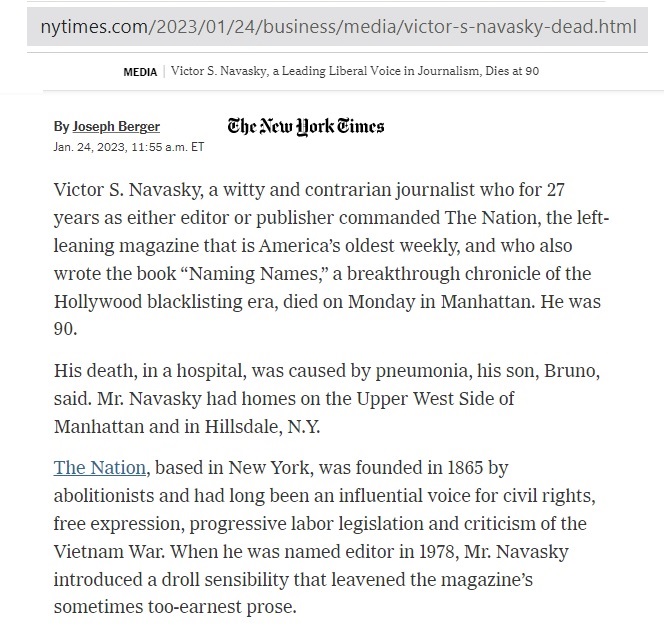
The Engelberg Variations —

"… the arrangement of one's books …."
. . . or of one's house committees . . . .

Comments Off on The Importance of Being Droll
Monday, January 23, 2023
A remark by Esther Dyson on Jan. 19:



See as well the above group-theory author here on Jan. 19.
Related material: "Same Staircase, DIfferent Day."
Comments Off on “You’re so vain…” — Song lyric
Sunday, January 22, 2023
Sometimes the word "preform" is not a misspelling.
"… there are present in every psyche forms which are unconscious
but nonetheless active — living dispositions, ideas in the Platonic sense,
that preform and continually influence our thoughts and feelings and actions."
The Source: Jung on a facultas praeformandi . . .

Illustration —
"A primordial image . . . .
the axial system of a crystal"

For those who prefer a Jewish approach to these matters —

(Post last updated at about 2:10 PM ET on Jan. 23, 2023.)
Comments Off on Preform

"Before time began, there was the Cube." — Transformers (2007)
Related literature:

Comments Off on “Preform an affine transformation”
Comments Off on The Approach

|
Number
|
Space
|
|
Arithmetic
|
Geometry
|
|
Discrete
|
Continuous
|
Related literature —
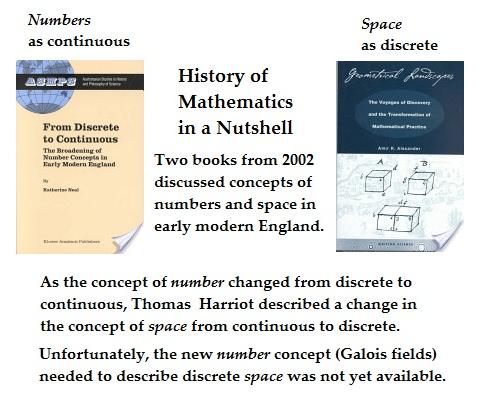

From a "Finite Fields in 1956" post —

The Nutshell:

Related Narrative:

Comments Off on The Stillwell Dichotomies
Saturday, January 21, 2023
Comments Off on One-Liner
"Death is the mother of beauty." — Wallace Stevens
From the 2020 Feast of St. Wallace Stevens,
who reportedly died in 1955 on August 2 —

Related material —

Exercise: Can each order-4 magic square be obtained by some
transformation like the one above (i.e., preserving affine hyperplanes)?
If not, why not?
Update of 31 Jan. 2023 — Spoiler: Remarks by Tilman Piesk.
Comments Off on Dead-Poet Witcraft

"The reader can construct her own cube . . . ."

Comments Off on Handcraft
Friday, January 20, 2023
From a search in this journal for Hancock —

The late David Crosby on Heaven, Wednesday, January 18 —
"I heard the place is overrated . . . cloudy."
Comments Off on Signature Piece
https://cowboystatedaily.com/2020/08/02/bill-sniffin-
wilford-brimley-represented-wyoming-well/ :



Photo: "Brimley at a screening of The Thing on October 22, 2012"
— Simple English Wikipedia, crediting "Marc Majcher – Flickr: IMG_6768"
Comments Off on Wilford Brimley versus Music-Theory Thing


For some, perhaps Vermont . . . For others, perhaps Wyoming.
Comments Off on “A Sort of Metaphysical State” — John O’Hara
Thursday, January 19, 2023

See also this journal on Monday, January 16.
Comments Off on Making the Cut
Continues.

In 2007, April 30 — Walpurgisnacht — was the
release date of the "Back to Black" single . . .

A related music venue —

A related map —

This post was suggested by . . .

Comments Off on Of London Bondage . . .
Last revised: January 20, 2023 @ 11:39:05
The First Approach — Via Substructure Isomorphisms —
From "Symmetry in Mathematics and Mathematics of Symmetry"
by Peter J. Cameron, a Jan. 16, 2007, talk at the International
Symmetry Conference, Edinburgh, Jan. 14-17, 2007 —
|
Local or global?
"Among other (mostly more vague) definitions of symmetry, the dictionary will typically list two, something like this:
• exact correspondence of parts;
• remaining unchanged by transformation.
Mathematicians typically consider the second, global, notion, but what about the first, local, notion, and what is the relationship between them? A structure M is homogeneous * if every isomorphism between finite substructures of M can be extended to an automorphism of M ; in other words, 'any local symmetry is global.' "
|
A related discussion of the same approach —
|
"The aim of this thesis is to classify certain structures
which are, from a certain point of view,
as homogeneous as possible, that is
which have as many symmetries as possible.
… the basic idea is the following: a structure S is
said to be homogeneous if, whenever two (finite)
substructures S1 and S2 of S are isomorphic,
there is an automorphism of S mapping S1 onto S2.”
— Alice Devillers,
“Classification of Some Homogeneous
and Ultrahomogeneous Structures,”
Ph.D. thesis, Université Libre de Bruxelles,
academic year 2001-2002
|
The Wikipedia article Homogeneous graph discusses the local-global approach
used by Cameron and by Devillers.
For some historical background on this approach
via substructure isomorphisms, see a former student of Cameron:
Dugald Macpherson, "A survey of homogeneous structures,"
Discrete Mathematics , Volume 311, Issue 15, 2011,
Pages 1599-1634.
Related material:
Cherlin, G. (2000). "Sporadic Homogeneous Structures."
In: Gelfand, I.M., Retakh, V.S. (eds)
The Gelfand Mathematical Seminars, 1996–1999.
Gelfand Mathematical Seminars. Birkhäuser, Boston, MA.
https://doi.org/10.1007/978-1-4612-1340-6_2
and, more recently,
Gill et al., "Cherlin's conjecture on finite primitive binary
permutation groups," https://arxiv.org/abs/2106.05154v2
(Submitted on 9 Jun 2021, last revised 9 Jul 2021)
This approach seems to be a rather deep rabbit hole.
The Second Approach — Via Induced Group Actions —
My own interest in local-global symmetry is of a quite different sort.
See properties of the two patterns illustrated in a note of 24 December 1981 —

Pattern A above actually has as few symmetries as possible
(under the actions described in the diamond theorem ), but it
does enjoy, as does patttern B, the local-global property that
a group acting in the same way locally on each part induces
a global group action on the whole .
* For some historical background on the term "homogeneous,"
see the Wikipedia article Homogeneous space.
Comments Off on Two Approaches to Local-Global Symmetry
Wednesday, January 18, 2023
The title describes one approach to longevity
from an obituary for a woman who reportedly
died yesterday at the age of 118.
These dietary supplements are related, if only
metaphorically, to posts now tagged Juneteenth 2007.
Comments Off on “Wine and Chocolate”

In 2007, April 30 — Walpurgisnacht — was also the
release date of the "Back to Black" single . . .

A related music venue —

Comments Off on Symmetries from Walpurgisnacht 2007
Tuesday, January 17, 2023
"Remember your epiphanies on green oval leaves,
deeply deep, copies to be sent if you died to all
the great libraries of the world, including Alexandria?"

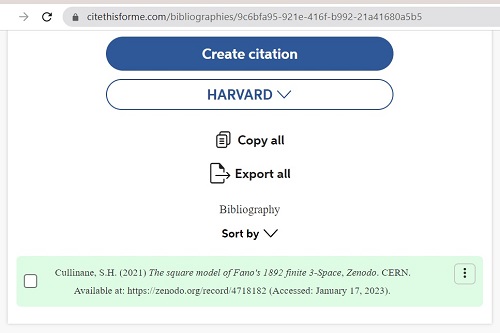
Comments Off on Alexandria Quartets
"Think of it as a cybernetic version of prayer…."
— Dennis Overbye in today's online New York Times ,
https://www.nytimes.com/2023/01/17/science/
cosmology-universe-programming.html .
Related remarks: The Log24 tag Geheimnis der Einheit, and . . .

Related art — "The Difference," a Log24 post of Epiphany 2010.
Comments Off on Annals of Scientific Theology
See the above title in this journal.
Comments Off on Cold Mountain
Monday, January 16, 2023
See earlier instances of "working backwards" in this journal.
Alan Rickman as Metatron in "Dogma" —

Alan Rickman as Severus Snape at Hogwarts —

Page three hundred and ninety-four —

See also today's previous post.
Comments Off on “Working Backwards” … Continues
From my RSS feeds last night —

This journal on Wednesday, December 28, 2022 —
For those who prefer a "liturgical, ecstatic style" —

Comments Off on A Magic Mountain for McCarthy
Comments Off on Ready When You Are, C. B.
Sunday, January 15, 2023
Organic Symmetry
"Benzene is a natural constituent of petroleum
and is one of the elementary petrochemicals.
Due to the cyclic continuous pi bonds between
the carbon atoms, benzene is classed as an
aromatic hydrocarbon. Benzene is a colorless
and highly flammable liquid with a sweet smell,
and is partially responsible for the aroma of gasoline."
— Wikipedia
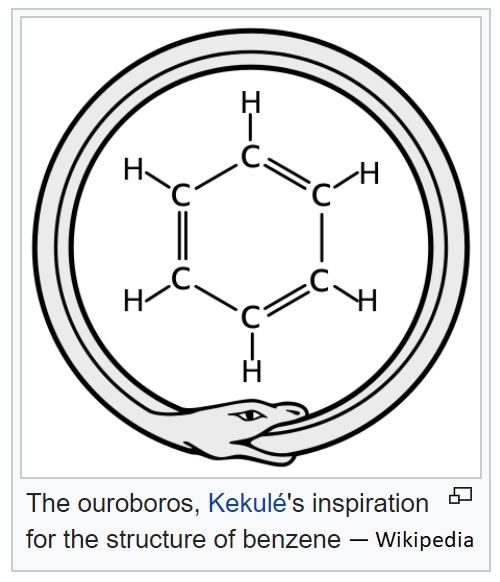
Anti-Organic Symmetry —
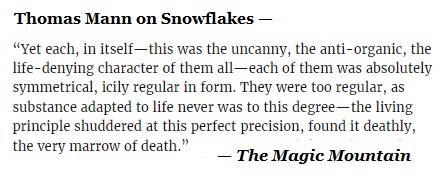

Comments Off on Fire and Ice
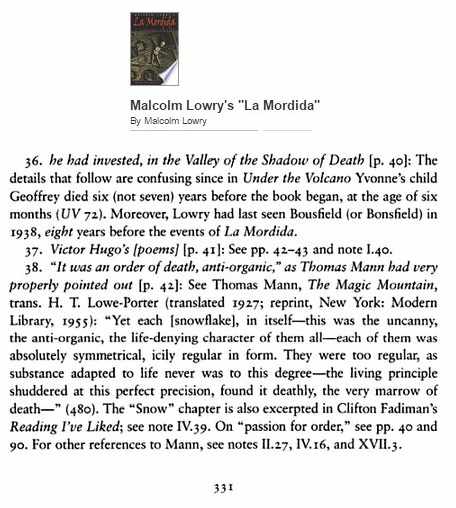
* The title is that of a Stephen King book . . .

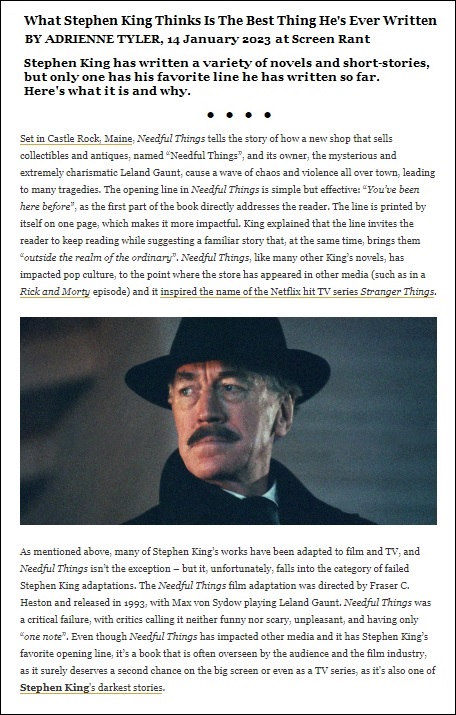
Comments Off on Needful Things*
Comments Off on Snowflake Kindling
The three nested icosahedra on the cover of
a recent vulgarized-mathematics book suggest . . .
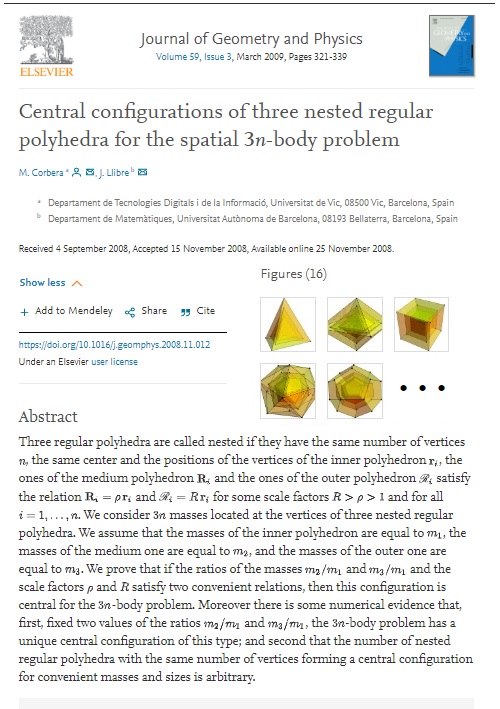
This is, of course, a highly special case of the much more
general, and much more difficult, n-body problem .
Comments Off on Nested Polyhedra
Comments Off on Types of Ambiguity
Comments Off on A Date for Thing
Saturday, January 14, 2023
|
From Gilles Châtelet, Introduction to Figuring Space
(Springer, 1999) —
Metaphysics does have a catalytic effect, which has been described in a very beautiful text by the mathematician André Weil:
Nothing is more fertile, all mathematicians know, than these obscure analogies, these murky reflections of one theory in another, these furtive caresses, these inexplicable tiffs; also nothing gives as much pleasure to the researcher. A day comes when the illusion vanishes: presentiment turns into certainty … Luckily for researchers, as the fogs clear at one point, they form again at another.4
André Weil cuts to the quick here: he conjures these 'murky reflections', these 'furtive caresses', the 'theory of Galois that Lagrange touches … with his finger through a screen that he does not manage to pierce.' He is a connoisseur of these metaphysical 'fogs' whose dissipation at one point heralds their reforming at another. It would be better to talk here of a horizon that tilts thereby revealing a new space of gestures which has not as yet been elucidated and cut out as structure.
4 A. Weil, 'De la métaphysique aux mathématiques', (Oeuvres, vol. II, p. 408.)
|
For gestures as fogs, see the oeuvre of Guerino Mazzola.
For some clearer remarks, see . . .

Illustrations of object and gestures
from finitegeometry.org/sc/ —
Object
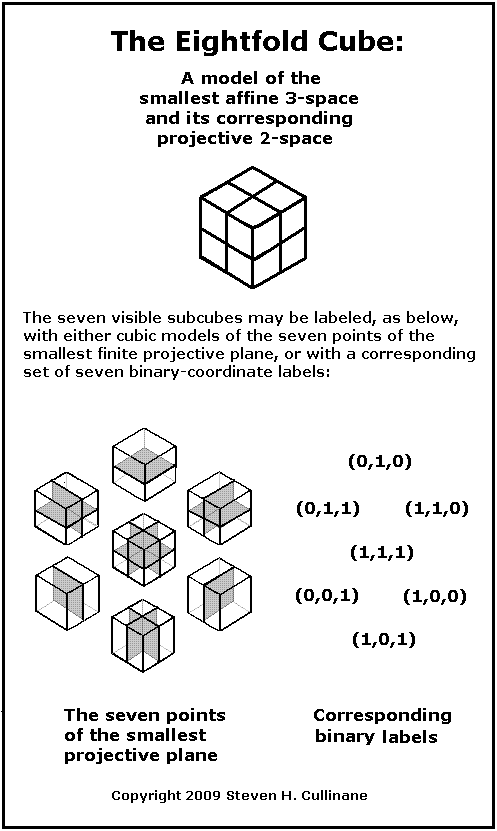
Gestures
An earlier presentation
of the above seven partitions
of the eightfold cube:
Related material: Galois.space .
Comments Off on Châtelet on Weil — A “Space of Gestures”
Friday, January 13, 2023
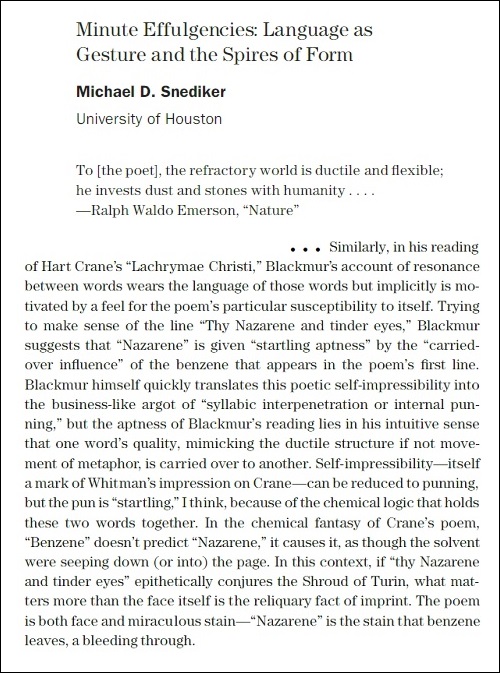
See Cormac McCarthy on "The Kekulé Problem" and . . .
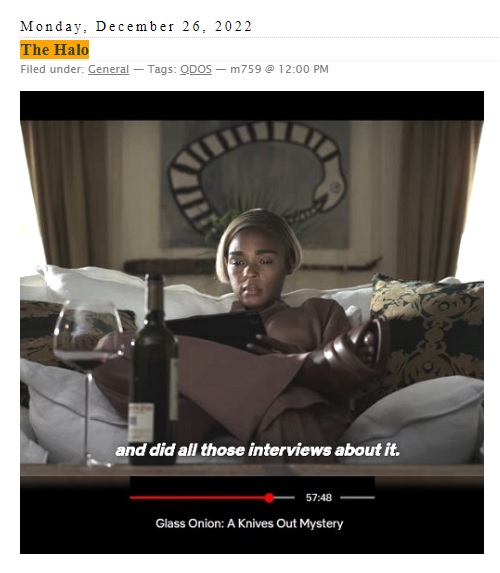
Comments Off on The Not-So-Hidden Figure
|
Mathematical Structures
Posted on 13/01/2023 by Peter Cameron
My last major job at Queen Mary University of London more than ten years ago was designing and presenting a new first-semester first-year module to be taken by all students on mathematics programmes or joint programmes involving mathematics. I discussed it in my LMS-Gresham lecture.
|
LMS

Gresham

"… seeds having fallen on barren rock, as it were" . . .
See today's previous Log24 post.
Comments Off on LMS Gresham
Comments Off on Darkness at Noon: Game of Stones*

The Source —

Some similar notions from my own work . . .
The "Digraph" of Mazzola might correspond to a directed graph
indicating the structure of a permutation, as at right below —
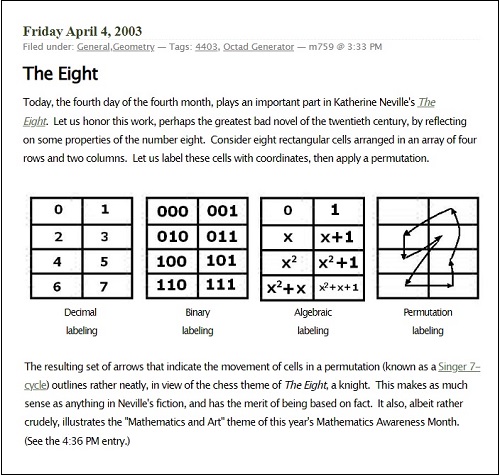
Mazzola's "Formula" might correpond to a matrix and translation that
transform the above "Space" of eight coordinates, and his "Gesture"
to a different way of generating affine transformations of that space . . .
as in my webpage "Cube Space, 1984-2003."
Comments Off on The “Diamond Space” of Mazzola
Comments Off on Dürer, Music, and Doktor Faustus
Thursday, January 12, 2023
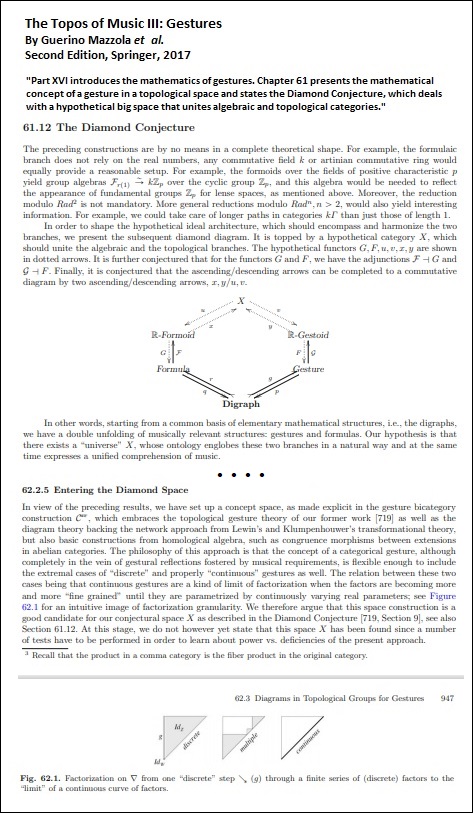
See also earlier references to Mazzola in this journal.
Comments Off on Mazzola’s Music-Theory “Diamond Space”
Wednesday, January 11, 2023
Comments Off on A Subtle Knife for Pullman
A sequel to the previous post, "How the Darkness Gets In" —

Comments Off on Raiders of the Lost Dark
|
THE PHILOSOPHY OF RUDOLF CARNAP
EDITED BY PAUL ARTHUR SCHILPP
Open Court Publishing Co.
Copyright © 1963 by The Library of Living Philosophers, Inc.
. . . .
In Princeton I had some interesting talks with Einstein….
. . . .
Once Einstein said that the problem of the Now
worried him seriously. He explained that the
experience of the Now means something special
for man, something essentially different from
the past and the future, but that this important
difference does not and cannot occur within physics.
That this experience cannot be grasped by science
seemed to him a matter of painful but inevitable
resignation. I remarked that all that occurs objectively
can be described in science; on the one hand the
temporal sequence of events is described in physics;
and, on the other hand, the peculiarities of man's
experiences with respect to time, including his different
attitude towards past, present, and future, can be
described and (in principle) explained in psychology.
But Einstein thought that these
scientific descriptions cannot possibly
satisfy our human needs; that there is
something essential about the Now
which is just outside of the realm of science.
We both agreed that this was not a question of a defect
for which science could be blamed, as Bergson thought.
I did not wish to press the point, because I wanted
primarily to understand his personal attitude to the
problem rather than to clarify the theoretical situation.
But I definitely had the impression that Einstein's
thinking on this point involved a lack of distinction
between experience and knowledge. Since science
in principle can say all that can be said, there is no
unanswerable question left. But though there is no
theoretical question left, there is still the common human
emotional experience, which is sometimes disturbing
for special psychological reasons.
|
See also . . .
The extraordinary consequences of Einstein’s universe:
Relativity shatters our experience of time
9th January 2023
By Michael David Silberstein
"Professor of Philosophy at Elizabethtown College
and co-athor [sic] of Emergence in Context:
A treatise of twentry [sic] first-century natural philosophy
(Oxford University Press, 2022)."
"… the experience that there is something special about
the character of the present moment. This is what presumably
lead [sic] Einstein to say that
'there is something essential about the Now
which is just outside the realm of science.' "
Silberstein does not give any source for his quotation.
But see the passage from Carnap above.
I do not recommend taking Carnap's — or Silberstein's —
word for anything.
The source of Silberstein's remarks is a publication of an
organization called "Institute of Art and Ideas," or IAI.
Wikipedia on that organization:
"The IAI is responsible for organising the bi-annual festival
HowTheLightGetsIn, the biggest philosophy and music
festival in the world* aimed at 'tackling the dearth of philosophy
in daily life,' in addition to monthly IAI Live events."
* Maya Oppenheim (7 September 2021):
"HowTheLightGetsIn: The world's largest philosophy
and music festival to ask life's big questions."
The Independent.
Comments Off on How the Darkness Gets In
Tuesday, January 10, 2023
(A sequel to Social Geometry)



Number mysticism I prefer, from a post of Nov. 15 last year —
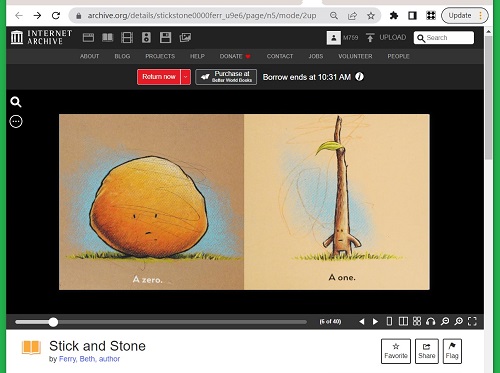
Comments Off on Social Number Mysticism

Other social notes from that May weekend —

Some related reading for Cormac McCarthy —
The Topos of Unconsciousness .
Comments Off on Social Geometry . . . Continues.
Monday, January 9, 2023
Comments Off on Not So Dark
The title refers to a post discussing a date,
that of last year's Feast of St. Thomas Becket.
Related material —
https://www.nytimes.com/2023/01/09/movies/ruggero-deodato-dead.html .
Comments Off on “Worstward Ho!” Continues.
Evolution of an image . . .

( Not to be confused with The Tin Man’s Hat. )
|





Comments Off on Snakes on a Plane
The tortoise of the previous post suggests . . .

"Is it the good turtle soup
or merely the mock?"
Related material from the above
Toronto premiere date —
Solomon and the Ring.
Comments Off on Theology and Narrative
From a link target in this journal on April 4, 2004 —
"Puzzle begun I write in the day's space . . . ."
Today's link targets —
Valéry and Rilke, Stevens and Borges . . . and Zeno.
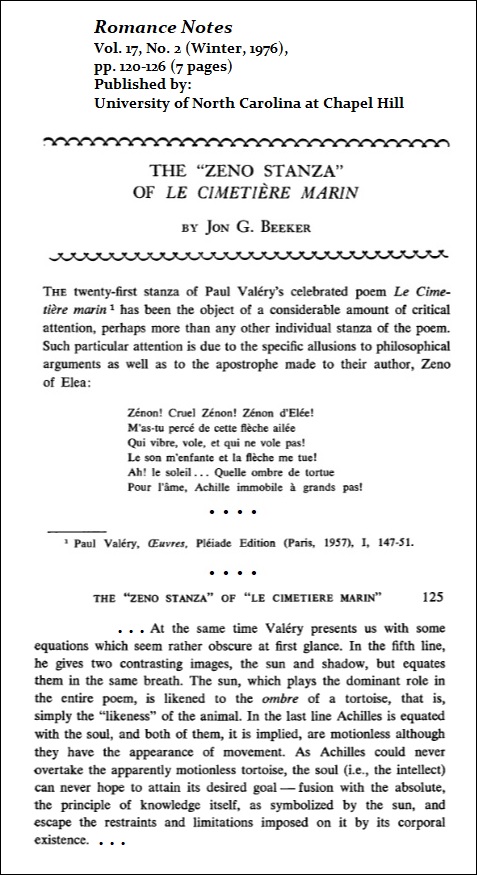
Comments Off on This Day’s Space
Sunday, January 8, 2023
From AP News in The Derrick , Oil City, PA, today —
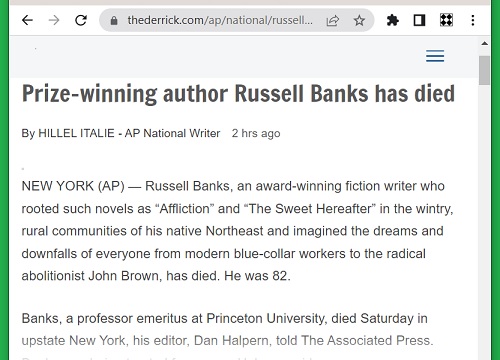
"Banks lived part of the year in Florida, and for a time
had a home in Jamaica, but he was essentially a man
of the North, with an old Puritan’s sense of consequences.
Snow fell often in his fiction . . . ." — Hillel Italie

Update of 3:33 PM ET —

From a link target in this journal on April 4, 2004 —
"Puzzle begun I write in the day's space . . . ."
Comments Off on Oil City Snow
Thandiwe Newton in "Reminiscence" (2021) —

The above film is from August 20, 2021.
From that same date —

Comments Off on Princess Charming
Saturday, January 7, 2023

Related material — Icon Parking and . . .

Comments Off on Iconic
https://www.theguardian.com/books/2023/jan/07/
it-altered-my-entire-worldview-leading-authors-pick-
eight-nonfiction-books-to-change-your-mind —
"… just one aspect of a historical process
that we can legitimately call 'progress' –
not a romantic or utopian or naive ideal,
but an empirical fact that we can see
in graphs and numbers."
… and sometimes elsewhere . . .

Comments Off on Important Product

"Might be a nice 20 page essay, but a bomb of a book"
— Herbert Gintis on Taleb's Black Swan , review dated April 10, 2012.
This remark might also be applied to Crumey's Mobius Dick :

Related material for Jungians who enjoy synchronicity —
The Log24 posts from the date of the Gintis review — April 10, 2012.
Comments Off on Saturday Reviews
Friday, January 6, 2023

Tuesday, November 8, 2016, was also the publication date
at Princeton University Press for a book by one Herbert Gintis:

Gintis reportedly died yesterday, Jan. 5, 2023.
"He graduated from the University of Pennsylvania
and then attended Harvard University for post-graduate
work in mathematics. After receiving his master's degree,
he grew disillusioned with the field, and while at Harvard,
became a sandal maker with a shop in Harvard Square."
In later years, Gintis was associated with the Santa Fe Institute.

Comments Off on Death of a Sandal Maker
Thursday, January 5, 2023

See also "Triangles Are Square" in 1984 —

Harvard Square:

Harvard Square, 1964
Comments Off on Logic and Geometry at Harvard
Comments Off on The Square-Triangle Problem
Wednesday, January 4, 2023
Comments Off on Brightness at Noon
Comments Off on Spaceballs
Tuesday, January 3, 2023
Monday, January 2, 2023
Comments Off on The Memorial Urn
Sunday, January 1, 2023
Comments Off on The Missing Links
Wallace Stevens —
"Reality is the beginning not the end,
Naked Alpha, not the hierophant Omega,
Of dense investiture, with luminous vassals."
— “An Ordinary Evening in New Haven” VI

Comments Off on Alpha
Saturday, December 31, 2022


This post was suggested by a "matrix rotator" photo dated 1953-03-02.
Some context — Kracauer's notion of "mass ornament."
Comments Off on Matrix Rotator
From this journal on Candlemas 2018 —


Also on Candlemas 2018 —
Comments Off on Dies Natalis: The Frame
Friday, December 30, 2022

Detail of the above screen (click to enlarge) —

See also this journal on the above date — June 10, 2021.
From this journal on May 6, 2009 —
A related picture of images that "reappear metamorphosed
in the coordinate system of the high region" —
(For the backstory, see Geometry of the I Ching
and the history of Chinese philosophy.)

Comments Off on Bullshit Studies: The View from East Lansing
The title is from . . .
https://booksonthewall.com/blog/samuel-beckett-quote-fail-better/ .
This post was suggested by yesterday's Feast of St. Thomas Becket —

A Beckett-related flashback linked to here yesterday —

Rosalind Krauss in 1978 —
"To get inside the systems of this work,
whether LeWitt's or Judd's or Morris's,
is precisely to enter
a world without a center,
a world of substitutions and transpositions
nowhere legitimated by the revelations
of a transcendental subject. This is the strength
of this work, its seriousness, and its claim to modernity."

Comments Off on “The ‘Dim Void’: Beckett’s Worstward Ho!”
Thursday, December 29, 2022
Comments Off on In memory of . . .
The first Romantics
"How a close group of brilliant friends,
in a tiny German university town, laid
the foundations of modern consciousness"
— Headline for the article whose URL is . . .
https://aeon.co/essays/
english-romanticism-was-born-from-a-serious-germanomania
The article was published by Aeon on December 20, 2022,
and is featured in today's Arts & Letters Daily . On the author:
"Andrea Wulf is a historian and the award-winning author
of several books, including the bestselling
The Invention of Nature (2015) and, most recently,
Magnificent Rebels: The First Romantics and
the Invention of the Self (2022). She is a Miller Scholar
at the Santa Fe Institute
and a Fellow of the Royal Society of Literature."

Related material — "The Eight" According to Coleridge.
Comments Off on Bullshit Studies: “Foundations of Modern Consciousness”
Comments Off on Art Theory: What It Is Ain’t Exactly Clear.
Two items from the same date in 2014 —



Comments Off on Literary Metadata: A Canterbary Tale
Wednesday, December 28, 2022
"The novelist Cormac McCarthy has been a fixture around
the Santa Fe Institute since its embryonic stages in the
early 1980s. Cormac received a MacArthur Award in 1981
and met one of the members of the board of the MacArthur
Foundation, Murray Gell-Mann, who had won the Nobel Prize
in physics in 1969. Cormac and Murray discovered that they
shared a keen interest in just about everything under the sun
and became fast friends. When Murray helped to found the
Santa Fe Institute in 1984, he brought Cormac along, knowing
that everyone would benefit from this cross-disciplinary
collaboration." — https://www.santafe.edu/news-center/news/
cormac-and-sfi-abiding-friendship
Joy Williams, review of two recent Cormac McCarthy novels —
"McCarthy has pocketed his own liturgical, ecstatic style
as one would a coin, a ring, a key, in the service of a more
demanding and heartless inquiry through mathematics and
physics into the immateriality, the indeterminacy, of reality."
A Demanding and Heartless Coin, Ring, and Key:
COIN

RING
"We can define sums and products so that the G-images of D generate
an ideal (1024 patterns characterized by all horizontal or vertical "cuts"
being uninterrupted) of a ring of 4096 symmetric patterns. There is an
infinite family of such 'diamond' rings, isomorphic to rings of matrices
over GF(4)."
KEY
"It must be remarked that these 8 heptads are the key to an elegant proof…."
— Philippe Cara, "RWPRI Geometries for the Alternating Group A8," in
Finite Geometries: Proceedings of the Fourth Isle of Thorns Conference
(July 16-21, 2000), Kluwer Academic Publishers, 2001, ed. Aart Blokhuis,
James W. P. Hirschfeld, Dieter Jungnickel, and Joseph A. Thas, pp. 61-97.
For those who prefer a "liturgical, ecstatic style" —

Comments Off on The Santa Fe Institute as Magisterium Wannabe
Tuesday, December 27, 2022
Comments Off on Rave Review . . .
"If the window is this matrix of ambi- or multivalence,
and the bars of the windows-the grid-are what help us
to see, to focus on, this matrix, they are themselves
the symbol of the symbolist work of art. They function as
the multilevel representation through which the work of art
can allude, and even reconstitute, the forms of Being."
— Page 59, Rosalind Krauss, "Grids," MIT Press,
October , Vol. 9 (Summer, 1979), pp. 50-64
Related material —

Click the above image for a related Log24 post of 15 years ago today.
A related literary remark —
"Imagine Raiders of the Lost Ark set in 20th-century London, and then
imagine it written by a man steeped not in Hollywood movies but in Dante
and the things of the spirit, and you might begin to get a picture…."
— Doug Thorpe in an Amazon.com book review, not of Dark Materials.
Comments Off on The Forms of Being
Monday, December 26, 2022
For the title, see other posts tagged Super-8.

Click image for some background.
Related material —
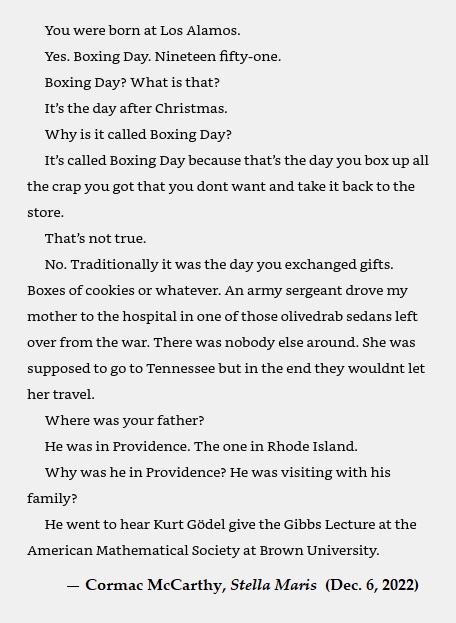
Comments Off on Super-8 Box
Sunday, December 25, 2022
Comments Off on Happy Holidays to Christopher Nolan.

Published on Sept. 15, 2022. See as well this journal on that date.
Comments Off on Merry Xmas, Enola.
Comments Off on The WTF Detective
Saturday, December 24, 2022
Grids
Author: Rosalind Krauss
Source: October , Vol. 9 (Summer, 1979), pp. 50-64
Published by: The MIT Press
Stable URL: http://www.jstor.org/stable/778321
From page 59:
"Flowing and freezing; glace in French means glass, mirror, and ice;
transparency, opacity, and water. In the associative system
of symbolist thought this liquidity points in two directions.
First, towards the flow of birth-the amniotic fluid, the 'source'-
but then, towards the freezing into stasis or death-
the unfecund immobility of the mirror. For Mallarmé, particularly,
the window functioned as this complex, polysemic sign by which
he could also project the 'crystallization of reality into art.' 5
Mallarmé's Les Fenêtres dates from 1863;
Redon's most evocative window, Le Jour , appeared in 1891
in the volume Songes . If the window is this matrix of
ambi- or multivalence, and the bars of the windows-the grid-
are what help us to see, to focus on, this matrix, they are
themselves the symbol of the symbolist work of art.
They function as the multilevel representation through which
the work of art can allude, and even reconstitute, the forms of Being."
5 Robert G. Cohn, "Mallarmé's Windows," Yale French Studies ,
no. 54 (1977), 23-31.
Another evocative example — See Galois Window in this journal.
Comments Off on Window as Matrix
Comments Off on Xmas with Moriarty: Big Little Ideas
Friday, December 23, 2022
"The book I came back to
George Eliot’s Middlemarch. I couldn’t cope with it
as a student; it wasn’t until I was grown up, and married,
and a parent, and trying to teach it myself, that I realised
its majestic scope and depth." — Philip Pullman in
The Guardian, Fri 23 Dec 2022 05.00 EST
Another instance of scope and depth —
"The Amber Spyglass" Log24 post of Wednesday.
See also other references here to Middlemarch.
Comments Off on Scope and Depth

"Was ist Raum, wie können wir ihn
erfassen und gestalten?"

Walter Gropius,
The Theory and
Organization of the
Bauhaus (1923)
A relevant illustration:
At math.stackexchange.com on March 1-12, 2013:
“Is there a geometric realization of the Quaternion group?” —

The above illustration, though neatly drawn, appeared under the
cloak of anonymity. No source was given for the illustrated group actions.
Possibly they stem from my Log24 posts or notes such as the Jan. 4, 2012,
note on quaternion actions at finitegeometry.org/sc (hence ultimately
from my note “GL(2,3) actions on a cube” of April 5, 1985).
These references will not appeal to those who enjoy modernism as a religion.
(For such a view, see Rosalind Krauss on grids and another writer's remarks
on the religion's 100th anniversary this year.)
Some related nihilist philosophy from Cormac McCarthy —
"Forms turning in a nameless void."

Comments Off on “Was ist Raum?” — Bauhaus Founder Walter Gropius
Thursday, December 22, 2022
The 'harvard gsd' in the link button below is the Graduate School of Design.

Related material — "News of the World" in this journal.
Comments Off on GSD is “Graduate School of Design.”
Comments Off on Welcome to the Desert of the Real
« Newer Posts —
Older Posts »




































